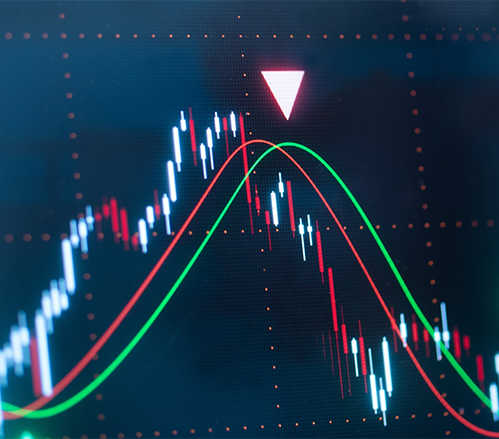The foreign exchange market, with its constant ebb and flow, can be a daunting landscape for new traders. But fear not, for technical analysis offers a guiding hand, and at its core lies the ubiquitous moving average (MA). This blog delves into the world of MAs in Forex, equipping you to navigate trends, identify entry/exit points, and formulate effective trading strategies.
Smoothing the Ride: How Moving Averages Work
Imagine a price chart that resembles a rollercoaster – sharp spikes and dips obscuring the underlying trend. The MA cuts through this noise, calculating the average price over a chosen period (e.g., 20 days, 50 days). By constantly recalculating as new price data arrives, the MA creates a smoother line, reflecting the general price direction.
Tailoring Your Tool: Setting Up Your Moving Average
There's no one-size-fits-all approach to MAs. The ideal settings depend on your trading style:
- Short-Term Scalping: Opt for shorter MAs (e.g., 10-day) to capture quick price movements.
- Day Trading: A balance is key. Consider MAs like the 50-day to gauge the medium-term trend while incorporating a shorter MA (e.g., 20-day) for entry/exit signals.
- Positional Trading: Longer-term MAs (e.g., 200-day) provide a big-picture view, aiding in identifying major trends.
Popular Moving Average Strategies for Forex
The beauty of MAs lies in their versatility. Here are some widely used strategies for scalping and day trading:
- Crossovers: A shorter MA crossing above a longer MA can signal a potential buy (uptrend), while the opposite suggests a sell (downtrend).
- Support and Resistance: MAs can act as dynamic support/resistance levels. Prices often bounce off these levels, offering entry/exit opportunities.
- The Moving Average Channel: Plot two MAs (one above, one below) to create a channel. Price movements within the channel indicate consolidation, while breakouts above/below can signal trend continuation.
Bringing it to Life: Using Moving Averages on MetaTrader 4 & 5
Both MetaTrader 4 (MT4) and MetaTrader 5 (MT5) – popular Forex trading platforms – offer built-in MA functionality. Simply navigate to the "Insert" menu, select "Indicators," and choose "Moving Average" from the list. Here, you can define the period, price type (close, open, etc.), and apply the MA to your chart.
Moving Forward with Confidence
While not a crystal ball, the moving average empowers Forex traders with valuable insights. Remember, MAs work best in trending markets. Always consider additional technical indicators and fundamental analysis to formulate a comprehensive trading strategy. So, fire up your MT4/MT5, explore the world of MAs, and take control of your Forex trading journey!

